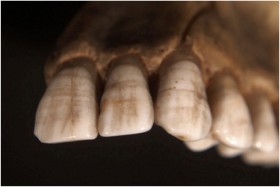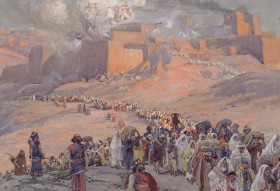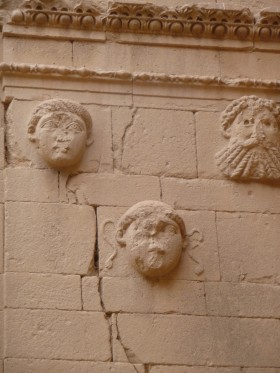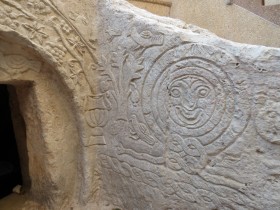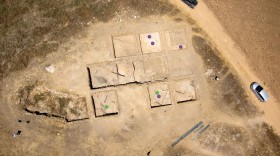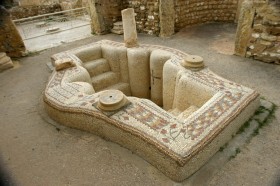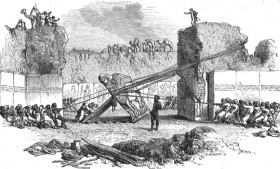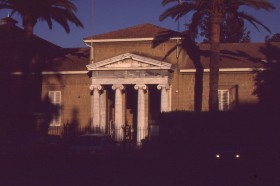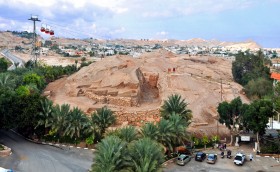The Life and Health of Assyrian Queens
When great Queen Yaba’ of Nimrud passed away, she left a curse to those who would dare disturb her final resting place. Despite her warning, excavations from 1988 to 1990 in the northwest palace of King Assurnasirpal II in the […]
New Sources and Insights on Judeans in the Babylonian Exile
Given the presence of Judeans in Babylonia, one would expect some of them to be mentioned in the over 20,000 known cuneiform tablets dating to the 6th-5th centuries B.C.E. The Late Babylonian […]
Hatra Image Gallery
Please take a look at the bellow photo gallery of Hatra circaand. Brought to you by The Ancient Near East Today. With a special thank you to the photographers, Suzanne Bott and Col. Mary Prophit, US Army. […]
Tomb Tracking: A New Burial Survey of Roman Galilee (1st-6th cent. CE)
Eldad Keynan, a native of Israel’s Galilee region, finishes a lunch of hummus and pita on the outskirts of the Christian town of Mailia, and engages in the customary post-prandial coffee with none other than the restaurant owner […]
A New Look at Baptism
Countless Christians are familiar with the rite of baptism. But Christian baptism was one of the most complicated of ancient initiation rituals insofar as it served many and varied objectives. More than representing a simple rite of passage—from outsider to insider […]
World War I and Archaeology in Iraq
By: Lamia Al Gailani Werr It is ironic that I am writing this article on the centenary of the First World War, while Iraq today is suffering from turbulence that is partly the consequence of that war. Iraq was created by Britain out of the remains of three Ottoman provinces. But the British occupation and […]
The Land Between the Two Rivers: Early Israelite Identities in Transjordan
By: Thomas Petter, Associate Professor at Gordon-Conwell Theological Seminary Were there Israelites in Transjordan in the early Iron Age? How would we know from archaeology? Or if not Israelites (and Moabites), whom should we be looking for? The task of plotting identities in the past is tricky business. It becomes even more problematic when opinions diverge […]
Cypriot Archaeology and the Great War
By: Thomas Davis, Professor of Archaeology, Southwestern Baptist Theological Seminary “Here’s another little baby Queen Victoria has got, Another little Colony, although she has got a lot. Another little Island, very wet and very hot, Whatever will she do with little Cyprus?” “What shall we do with Cyprus?” E.V.Page, 1879 (Varnava : 285). The weakness of […]
Tell Es-Sultan - A Pilot Project for Archaeology in Palestine
By: Lorenzo Nigro, University of Rome La Sapienza In a few weeks students and young scholars of Rome “La Sapienza” University, along with Palestinian colleagues from the Ministry of Tourism and Antiquities, will return to Tell es-Sultan. The site – identified since late antiquity with Biblical Jericho, the Canaanite city-state of Rwha –is the most visited […]
Taking a Closer Look at the Past: the Microanalysis of Ceramic Artifacts in Archaeology Today
By: Kamal Badreshany, CRANE Post-doctoral Fellow, Durham University When you walk across almost any Near Eastern tell, pottery sherds are likely to crunch under your feet. The enormous amount of pottery found on archaeological sites in the Near East is the result of two factors. First is the rapid spread of pottery technology throughout the Near East […]
Back to Assyria: Cities, Villages, and Canals in the Land behind Nineveh
By: Daniele Morandi Bonacossi Decades of conflict culminated in the genocidal Anfal campaign waged against the Kurds in 1988 by Saddam Hussein’s regime. Now, the stabilization and autonomy of Iraqi Kurdistan have been accompanied by the development not only of political, economic, and social life, but also education, culture, and scientific research. As a result […]
How ASOR is Helping to Protect Egyptian Antiquities
By: Peter Herdrich EFFORTS TO SAVE EGYPTIAN ANTIQUITIES ARE PICKING UP SPEED. BUT WHOSE RESPONSIBILITY IS IT? The Washington Post recently published an opinion piece by Mohammed Ibrahim, Egypt’s minister of antiquities, under the headline, “Egypt’s stolen heritage.” In it, Mr. Ibrahim connects Egypt’s archaeological heritage to two centuries of tourism, stating that tourism is […]
Late Prehistoric Pastoral Exploitation of Arid Lands in Jordan: New Light from the Black Desert
By: Gary O. Rollefson Jordan’s Black Desert is a uniquely harsh and inhospitable place. It is a broad band of basalt that stretches across Jordan’s panhandle, running some 145 kilometers from Azraq to its northeastern edge on the Iraqi border, and 115 kilometers from the Syria in the north to Saudi Arabia in the south. […]
The Past Performative: Thinking through the Azraq Community Archaeology Project
By: Alison Damick and Ahmad Lash All individuals belong to multiple fluctuating communities. How can archaeology help inform, and learn from, different communities? In this abridged piece from Near Eastern Archaeology, Alison Damick and Ahmad Lash explore how archaeology has engaged with the many communities that live in the town of Azraq in eastern Jordan. […]
Archaeology and the Bible – Yet Another Personal Viewpoint
By: Aren M. Maeir Biblical Archaeology, that so-popular yet so-vilified profession, deals with the interface between the archaeological remains and the cultures in which the biblical texts were incubated, formed, edited and collected. We archaeologists therefore deal with a large corpus of finds from many periods and cultures, as it is clear that the biblical […]
Saving Archaeological Heritage in Afghanistan
By: Hans Curvers Former coordinating archeologist at Mes Aynak During a crisis or conflict, interventions first focus on emergency relief. Once the ‘post-conflict stage’ is reached, the focus shifts to reconstruction. As soon as peace and stability are restored, the exit strategy starts. A straightforward linear process. Where does archaeology fit in? In the Afghan reality, […]
Archaeology for the Masses: Tearing Down the Barriers between Archaeology and the Public
By: Itzick Shai and Joe Uziel Who does archaeology belong to – the few or the many? Sitting in our archaeology labs we often find ourselves delving into small details uncovered in excavations. These questions of how past societies lived, interacted and functioned often seem of little importance to the wider public, which usually takes […]
Why Zooarchaeology Should Not Be the Neglected Step-Child of Archaeology and Zoology
By: David R. Lipovitch Zooarchaeology, or animal bone archaeology, is a relatively new sub-field of archaeology. While some work was done as early as the 1870s in trying to understand the role animals played in Near Eastern societies, zooarchaeology did not really reach fruition until the 1960s and ‘70s. This stemmed primarily from attempts among […]
Who Really Built the Water System at Megiddo?
By: Norma Franklin Visitors to Megiddo thrill to the long descent into the famous water system, first climbing down the many steps that surround the gaping chasm dug deep into the tell and then the rock cut shaft followed by a long tunnel cut into the bedrock. But who actually built the water system? In […]
